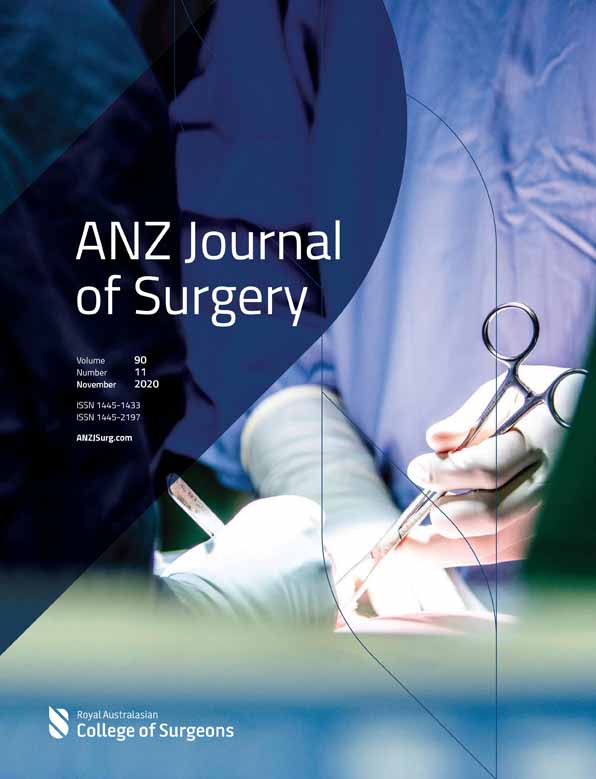Determinants influencing immediate breast reconstruction in an Australian tertiary public hospital
Abstract
Background
In Australia, the rate of immediate breast reconstruction (IBR) following breast cancer surgery is highly variable. This study aimed to identify the rate of IBR within an Australian public tertiary breast oncology referral centre and analyse the tumour and demographic factors that impact upon IBR uptake.
Methods
A retrospective cohort study of 288 admissions of women requiring mastectomy between January 2012 and March 2015 was performed. Data collected included demographic data, tumour pathology, operative details and neoadjuvant therapy. Demographic data included a Socioeconomic Index for Area score, based on individual residential postcode, country of birth and need for an interpreter.
Results
Our study demonstrated an IBR rate of 41.3% and included a wide variety of reconstructions. Factors that increased the IBR rate included younger age and negative lymph node status. Our patient population was ethnically and linguistically diverse, with over 50 different countries of birth represented and with 53 patients requiring interpreters in 19 different languages. Our analysis shows that the requirement for an interpreter is negatively correlated with having an IBR.
Conclusions
Our research demonstrates a high rate of IBR that includes a wide range of autologous and alloplastic reconstructions. Our study represents a unique opportunity to identify socioeconomic barriers that influence patient choice for reconstruction following mastectomy. This can lead to improved health care provision for our patients. This is particularly important in tertiary services with a strong multicultural and multi-linguistic population.
Conflicts of interest
None declared.




